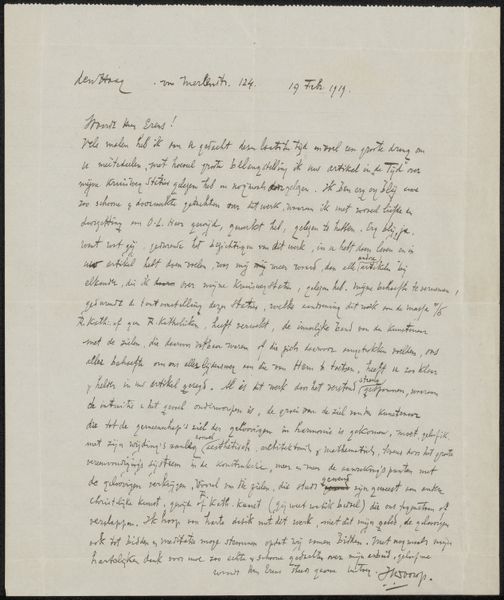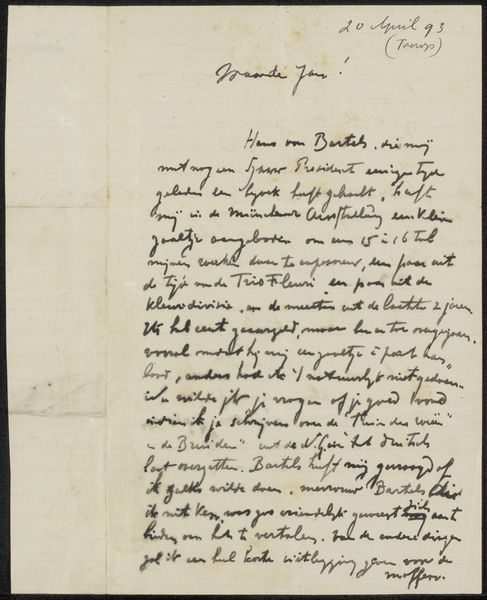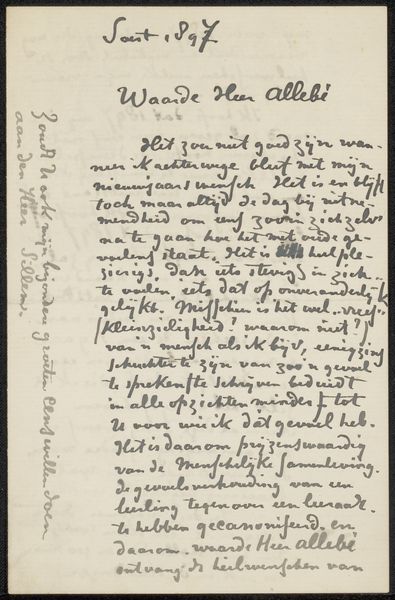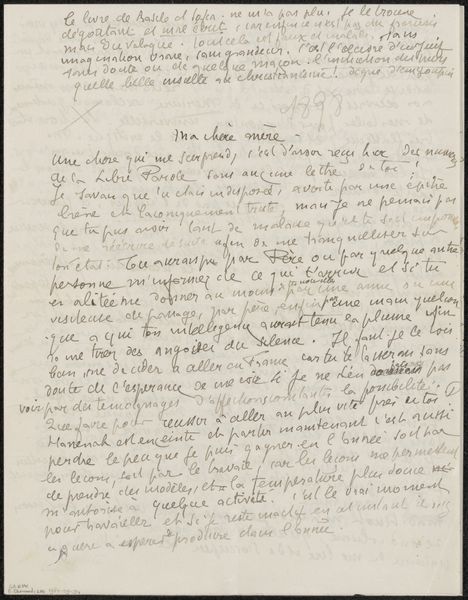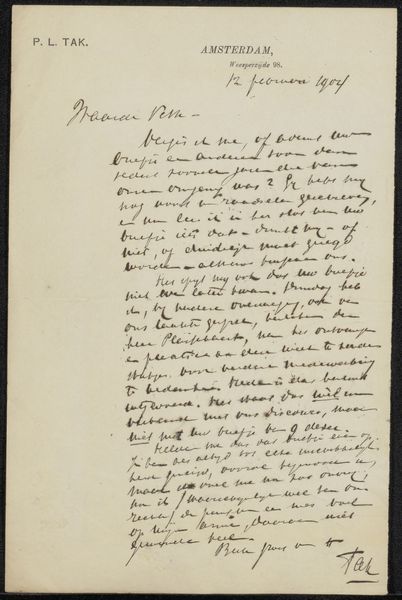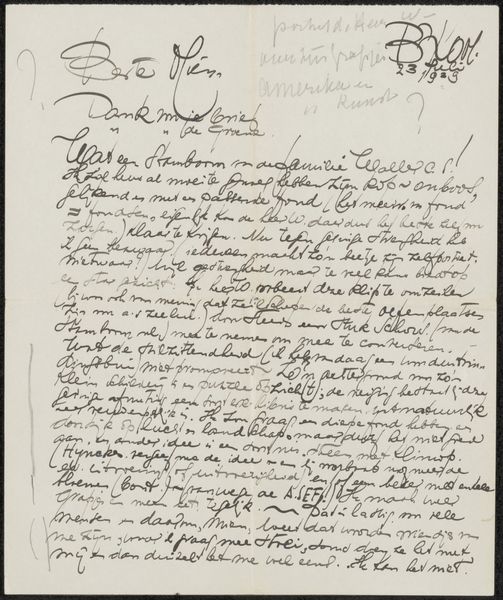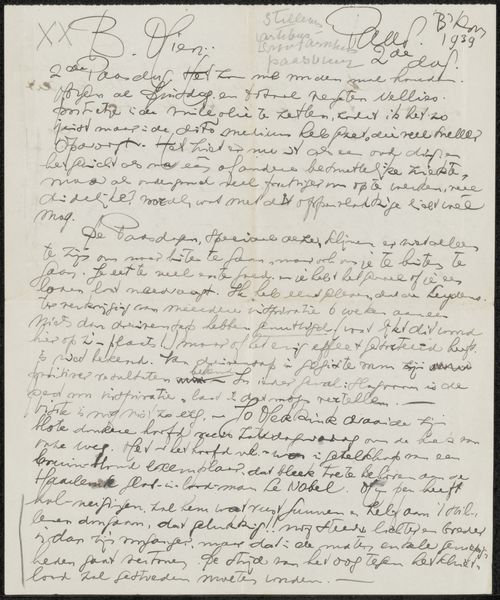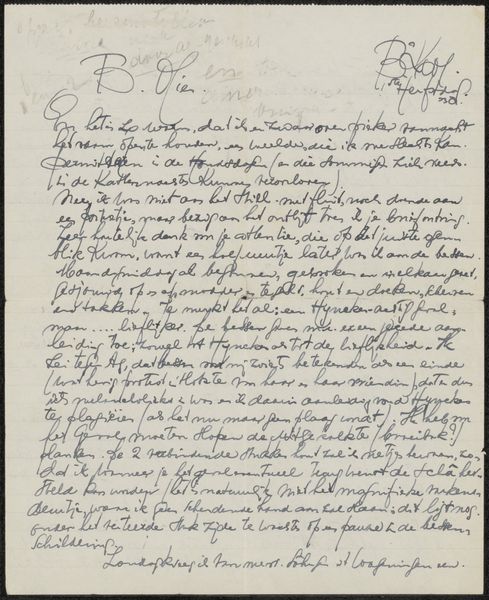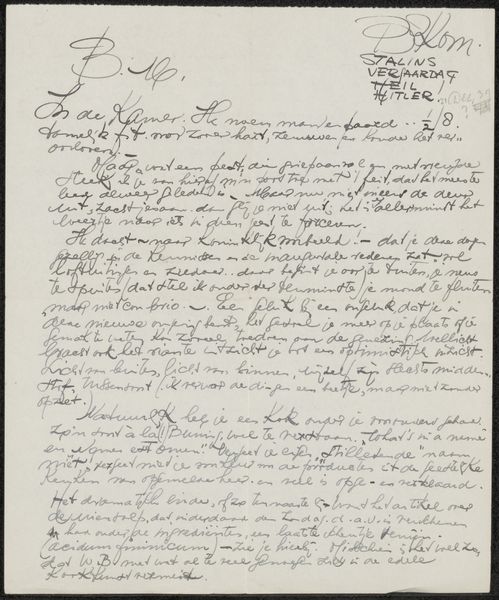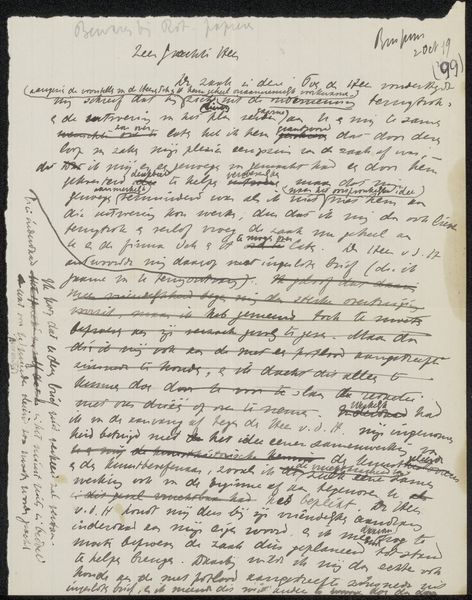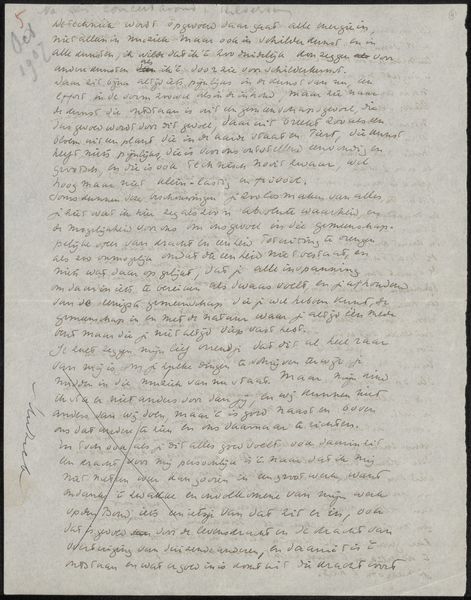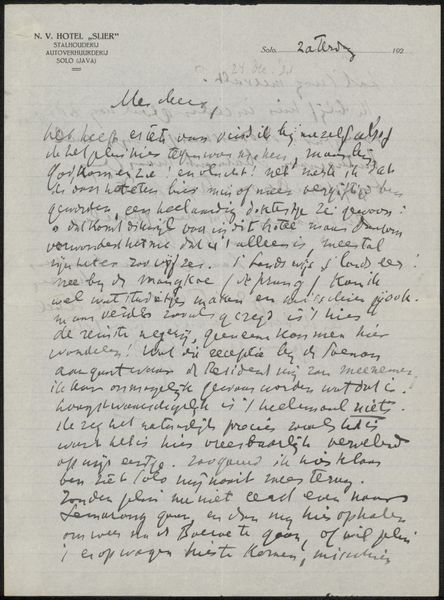
drawing, paper, ink
#
drawing
#
paper
#
personal sketchbook
#
ink
#
calligraphy
Copyright: Rijks Museum: Open Domain
Curator: Let’s discuss this intriguing letter by Jan Toorop, titled “Brief aan L. van den Broeke,” believed to have been written around 1917 or 1918. The artwork, part of the Rijksmuseum collection, employs ink on paper and showcases Toorop’s unique calligraphy. Editor: My initial impression is one of controlled chaos. The tight script, bordering on illegible in places, suggests a hurried intimacy. There's an almost desperate energy in the cramped formations of letters that somehow expresses more than their literal meaning. Curator: Indeed. Contextually, the letter sheds light on Toorop's mindset during a tumultuous period, possibly during or shortly after World War I. We see him grappling with the role of art amidst suffering and searching for solace. The content references sending a drawing made in the style of a fresco of St. Francis from when he was staying on Texel. Editor: From a formal perspective, the varying weight and direction of the ink strokes create a textured surface. While essentially monochromatic, there's a play of light and shadow. Do you notice that there is a lot of peripheral text here? We're left with knowing this is some sort of intimate, but unaddressed communication or exchange. Curator: Precisely. The visible corrections and additions are not just scribbles. Rather, they become integral layers of meaning, capturing a real moment of creation. I interpret the medium – a handwritten letter – as central to its public meaning. What do we gain when intimate letters like this enter the public sphere? Does this action shift how the reader engages the text and context? Editor: It highlights the artifice of even spontaneous expression. The inherent construction is so emphasized that it undermines the meaning it tries to convey. I find myself almost ignoring the linguistic content and regarding it as texture. A very intriguing dichotomy to explore. Curator: It prompts a valuable consideration of art as a historical object, offering glimpses into a specific moment and place. Toorop provides us a way to engage the public memory around trauma in Europe and the tension between that memory, a message to Broeke, and the physicality of ink on paper. Editor: In my perspective, that memory, regardless of who experiences it, transforms into texture here and undermines a lot of narrative that would potentially distract the observer from the core materiality.
Comments
No comments
Be the first to comment and join the conversation on the ultimate creative platform.
